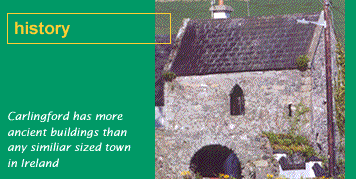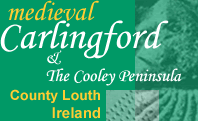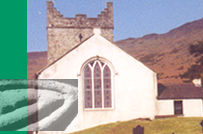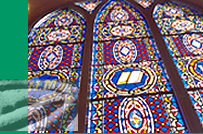



Carlingford was raided by the Vikings in the 8th & 9th centuries and then
the Normans in the 12th century. It is now a listed Medieval Heritage
Town - it has more historical buildings than any similar sized town in
the whole of Ireland;
i King
Johns' Castle (pre 1210) lies on a high rock guarding the entrance
to the harbour
ii Taaffe's
Castle (15th century) with its' crenellated battlements, murder holes,
slit windows for archers and barrel vaulted basement is a fine example
of a castlelated town house.
iii The Mint was established
in 1467 and it too still stands today.
iv Much
of the old walls have gone but The Tholsel (or gate tower) remains
in fine condition, an medievil customs barrier used to prevent un taxed
goods from entering to city.
 v
The Heritage Centre
is located in the tower of the original town wall, now part of the Old
Carlingford Church. History of Carlingford exhibition. Tel (042) 937 3454.
v
The Heritage Centre
is located in the tower of the original town wall, now part of the Old
Carlingford Church. History of Carlingford exhibition. Tel (042) 937 3454.
vi The
ruins of Carlingford Friary, a Dominican Friory was founded by
Richard de Burgo, earl of Ulster in 1305.
Legends
An Tain Bó Cuailigne the national epic of Ireland is centralised
on the Cooley Peninsula. Here Cuchulainn, Queen Maebh and the renowned
Brown Bull of Cooley met their fate. Their route can be followed across
Ireland to the Cooley Mountains. This national way marked way is known
as The Táin Trail.
Carlingford lies on the Cooley Peninsula with woodland, forests, mountains, rivers and varied coastline. It is a land steeped in myth & legend, once inhabited by the great giant, Fionn Machuil. He once roamed the land and on his last day he gathered a large piece of earth and threw it out to sea. He laid down to rest and ended his great life as Slieve Foy ~ Carlingford Mountain. The shape of his body can be seen in the shape of the Mountain. The earth he threw became known as Isle of Man.